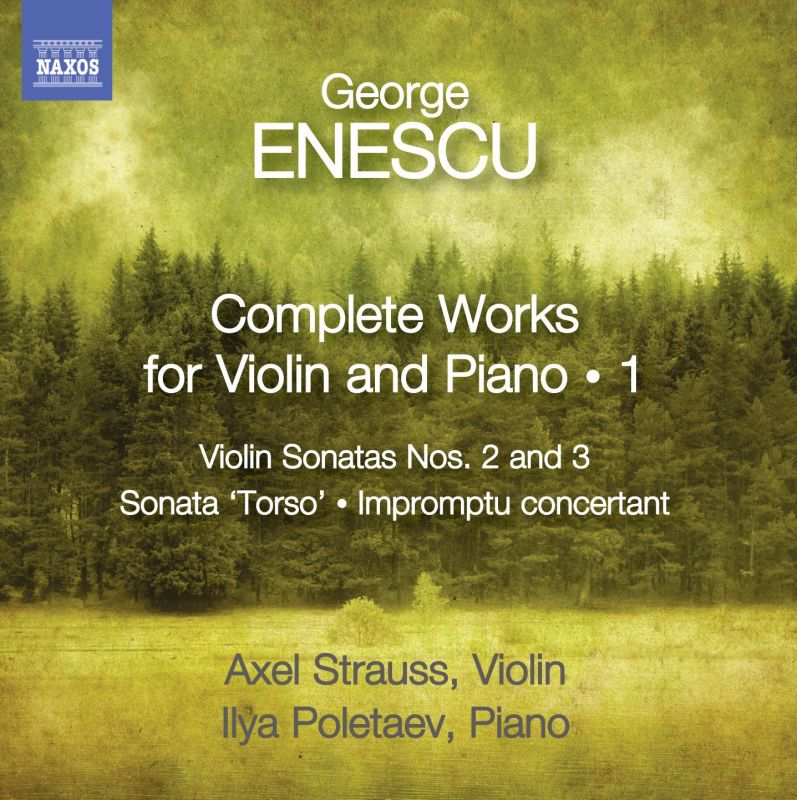ENESCU Violin Sonatas Nos 2 & 3
Strauss and Poletaev launch Enescu sonata series for Naxos
View record and artist detailsRecord and Artist Details
Composer or Director: George Enescu
Genre:
Chamber
Label: Naxos
Magazine Review Date: 11/2013
Media Format: CD or Download
Media Runtime: 67
Mastering:
DDD
Catalogue Number: 8 572691

Tracks:
| Composition | Artist Credit |
|---|---|
| Sonata for Violin and Piano No. 2 |
George Enescu, Composer
Axel Strauss, Violin George Enescu, Composer Ilya Poletaev, Piano |
| Sonata for Violin and Piano, 'Torso' |
George Enescu, Composer
Axel Strauss, Violin George Enescu, Composer Ilya Poletaev, Piano |
| Impromptu Concertant |
George Enescu, Composer
Axel Strauss, Violin George Enescu, Composer Ilya Poletaev, Piano |
| Sonata for Violin and Piano No. 3, 'dans le caract |
George Enescu, Composer
Axel Strauss, Violin George Enescu, Composer Ilya Poletaev, Piano |
Author: Guy Rickards
Twenty-seven years later, Enescu’s Third is the Second’s diametric opposite, avowedly of ‘popular Romanian character’ (although not quoting any folk tunes) from bar 1. It has been recorded many times and with its combination of fearsome technical challenge, exotic Eastern European accent and perfect proportions it is not hard to hear why. Strauss and Poletaev prove formidable exponents of its many charms and if not perhaps as idiomatic as Sherban Lupu in either of his recorded accounts (that on Altarus was reissued on Continuum), Strauss’s is still a sparkling account, superior to Szalai and a rival to Kavakos. Poletaev accompanies with fire and panache.
In between came the single-movement Torso Sonata in A minor (1911), though whether it was penned for a larger sonata that never materialised or as an independent work is unclear. There are Romanian elements – the wistful opening theme, for instance – neatly integrated within a mainstream late-Romantic idiom. The fleeter tempi here again pay dividends, as also in the short Impromptu concertant (1903), Strauss and Poletaev tauter than Samouil and Bara. Naxos’s sound is clear and natural though not as resonant as some rivals.
Explore the world’s largest classical music catalogue on Apple Music Classical.
Included with an Apple Music subscription. Download now.

Gramophone Digital Club
- Digital Edition
- Digital Archive
- Reviews Database
- Events & Offers
From £9.20 / month
Subscribe
Gramophone Club
- Print Edition
- Digital Edition
- Digital Archive
- Reviews Database
- Events & Offers
From £11.45 / month
Subscribe
If you are a library, university or other organisation that would be interested in an institutional subscription to Gramophone please click here for further information.






